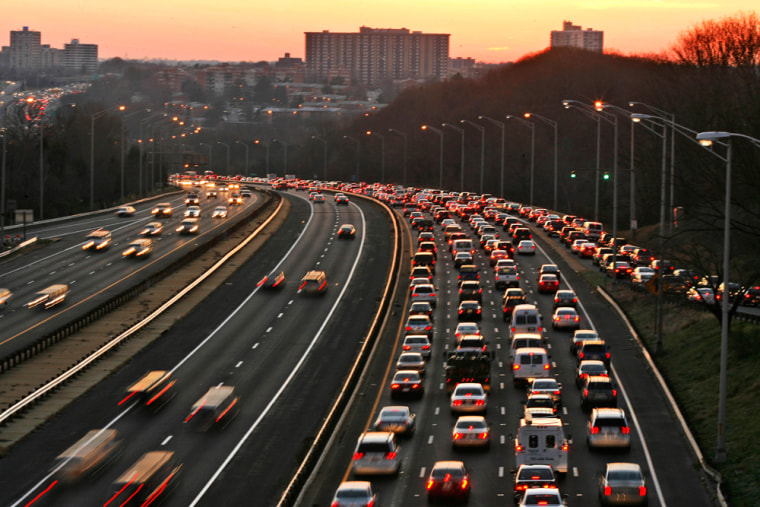Insurance regulators and safety activists are alarmed at what they describe as a stunning rise in the number of drivers who are cutting back or even dropping their auto insurance to save money during the recession.
“It’s been a shock,” said Chris Pringle, owner of All American Insurance Agency in Little Rock, Ark., who said up to 20 percent of his clients had dropped their policies or missed payments in recent months. “I thought we were somewhat in a recession-proof business, because (auto insurance is) required for everyone to have.”
Karl Newman, president of the Northwest Insurance Council, a trade association based in Seattle, warned that “we may be looking at record numbers of uninsured motorists across the nation.”
“When you see a multi-car collision on the freeway ... if there’s more than three or four cars there, at least one of them is likely to be uninsured,” Newman said.
Industry figures back up that concern. By next year, 1 of every 6 drivers on U.S. roadways is likely to be uninsured, according to the Insurance Research Council, a nonprofit group financed by the insurance industry. To calculate that figure, the council reviewed accident claims processed by insurers covering half of the nation’s drivers.
All but two states require motorists to carry liability insurance — New Hampshire and Wisconsin are the exceptions — and over recent years, the percentage of drivers without it had fallen steadily, reaching a modern low of 13.8 percent just two years ago, the research council said.
But last year — the first full year of the economic recession that started in December 2007 — the rate spiked to 14.6 percent. It is forecast to reach 16.1 percent by the end of this year, which would work out to more than 33 million licensed drivers across the country without coverage, based on figures compiled by the Federal Highway Administration.
“As a police officer, we see it all the time,” said Steve Ellis, a sheriff’s deputy and driving instructor in King County, Wash. “It’s gambling with your money, and it’s gambling with other people’s lives.”
Big gamble for small returnThe phenomenon is directly attributable to the sour economy, said Elizabeth A. Sprinkel, senior vice president of the research council.
The report found that an increase in the unemployment rate of 1 percentage point was directly associated with an increase in the uninsured motorist rate of more than three-quarters of a percentage point. Sprinkel called that finding “an unfortunate consequence of the economic downturn (that) illustrates how virtually everyone is affected by recent economic developments.”
Tommy Manzullo, an agent with A Ace Insurance Agency in Baton Rouge, La., said that when he calls clients to remind them to pay their premiums, he usually gets the same response: They can’t afford even the minimum liability coverage required under state law. Food and rent are more immediate concerns.
But no matter how tight finances get, dropping your auto insurance is one of the worst steps you can take, law enforcement officials and insurance industry representatives say.
The average auto insurance policy cost $72.25 a month in 2007, the last year for which full figures are available, the National Association of Insurance Commissioners said. But dropping it can cost considerably more.
“Uninsured motorists face legal fees, fines (and)penalties, including a suspended license,” said Elaine Zeinner, a spokeswoman for AAA.
That’s not to mention tens or even hundreds of thousands of dollars in hospital and repair bills if you’re in an accident. And in states without “no-fault” insurance laws, you could also be on the hook for the bills of other drivers or passengers, who could sue and, if successful, tap your bank accounts and garnishee your wages.
“You could lose your house because someone is going to be suing you for medical bills and damage to the vehicle,” said Travis Bennett, an agent with AIC Insurance in Redmond, Ore.
‘In the long run, it’s going to hurt’It can also be a bad idea to cut back on the coverage you have, agents and regulators said.
“Going underinsured is a financial nightmare,” said Bob Davis, an agent with State Farm Insurance in Evansville, Ind., who said he had been busy in recent months changing customers’ policies.
“They’re lowering liability charges and actually getting rid of comprehensive coverage,” Davis said. “Yes, they are saving $13 to $14 a month, but what they find in the long run (is) it’s going to hurt.”
Even with the legal minimum policy in most states, paying for repairs out of pocket is out of reach for most drivers, said Brian Hazelrigg, an agent with State Farm Insurance in Columbia, Mo.
“I would make sure they understand what happens if we drive out of this parking lot and have an accident,” Hazelrigg said. “What are they sacrificing from losing that coverage?”
The National Association of Insurance Commissioners, which represents insurance regulators in all 50 states, said most Americans were woefully uninformed about what was covered by their auto policies.
A quarter of Americans rarely or never review their policies, the association reported in a survey, while three-fifths review their coverage only when they file a claim or renew their policies. As a result, tens of millions of Americans are driving around with policies that don’t reflect major changes in their incomes and family situations, it said.
The survey, which questioned 1,000 U.S. adults in December, reported a margin of sampling error of 3.1 percent.
“Now, more than ever, consumers need to be mindful of the impact their insurance decisions can have on their financial future,” said Terri Vaughan, chief executive of the association.
